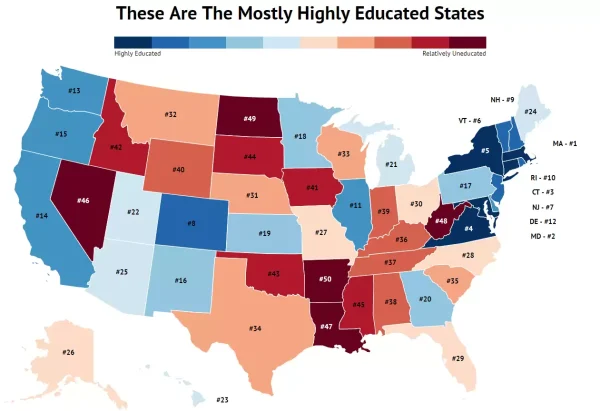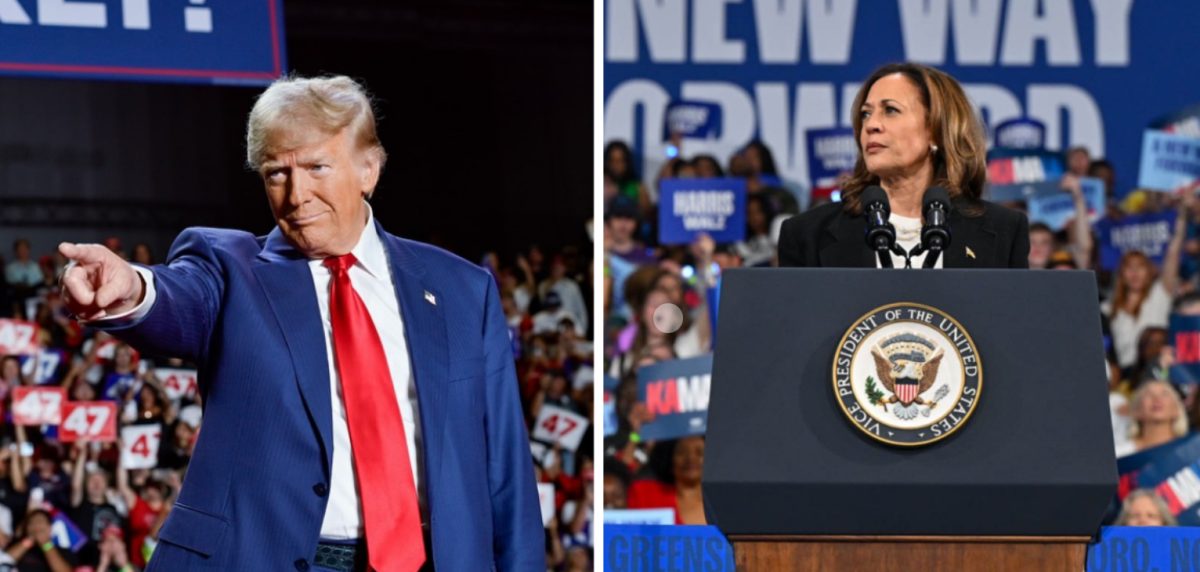The 2024 U.S. presidential election was held on November 5. Donald Trump secured 295 electoral votes, defeating Kamala Harris who garnered 226, making Trump the 47th president of the United States and securing a return to the White House after four years of Democratic leadership under President Joe Biden. Although Trump faces legal challenges, including an upcoming court appearance in late November for a conviction related to falsifying business records, his win signals a strong base of support, particularly among certain demographics.
Trump’s success in the election can largely be attributed to his solid backing among men and white voters without college degrees. These groups have consistently been a cornerstone of Trump’s support base, and his campaign focused on issues such as job creation, tax cuts, and immigration reform, which resonate strongly with working-class Americans. There is a clear divide in political preferences based on educational attainment. States with lower educational levels, such as West Virginia, Kentucky, and much of the South, were more likely to vote Republican and supported Trump. In contrast, more educated states such as California, Massachusetts, and New York leaned toward Harris and the Democratic Party.


The education gap in the U.S. continues to influence political outcomes. Trump’s ability to appeal to voters in less-educated areas has been crucial to his success.
Kamala Harris, the Democratic candidate, used various strategies to appeal to voters, especially the younger generation. Her campaign heavily relied on digital platforms like TikTok, where she targeted Gen Z voters. This group, with their growing influence, has been key in recent elections. TikTok allowed Harris to engage with young people directly, sharing behind-the-scenes content and discussing issues like climate change, social justice, and women’s rights. These are all issues that resonate with younger voters, many of whom are deeply invested in progressive change. Harris’s ability to use TikTok effectively helped her communicate her policies and foster a sense of connection with voters, particularly those who might feel disconnected from traditional political channels.

A major issue in Harris’s campaign was reproductive rights. In the aftermath of the Supreme Court’s decision to overturn Roe v. Wade in 2022, Harris made it clear that restoring access to abortion and safeguarding women’s reproductive rights was a top priority. This issue became even more urgent for many voters, especially women, who saw the loss of Roe as a threat to broader gender equality. Harris positioned herself as a defender of reproductive freedom, advocating for both the right to choose and broader measures for gender equity, including pay equity and protection from discrimination.
Kelini Senanayake, a grade 12 student at King, says “ I strongly believe in a woman’s right to make her own choices about her body. Access to safe and legal abortion is essential for equality and healthcare. It is crucial to support leaders like Kamala Harris, who stand up for reproductive rights and work to protect these fundamental freedoms.”
Trump’s platform, on the other hand, focused on economic growth, national security, and social conservatism. He promised to combat inflation, stimulate job creation, and support American industries through deregulation.
Bhavakeshan Jayakkumar, a grade 12 student at King, says “President Trump’s tax policies have been a game-changer for the economy, putting more money back into the hands of hardworking Americans and businesses. By cutting unnecessary regulations and taxes, he’s created an environment where businesses can thrive, jobs can grow, and economic efficiency is finally within reach.”
Trump has also vowed to take a strong stance on immigration, continuing his efforts to build the border wall and reform U.S. immigration policies. These promises reflect his goal of prioritizing U.S. interests, both economically and politically. On the social front, Trump’s stance on issues like abortion and gun rights aligns with his broader conservative vision, positioning him as a defender of traditional American values. He has also proposed tax cuts for businesses and the wealthy to boost the economy and bring manufacturing jobs back to the U.S.
For Canada, Trump’s presidency could have significant implications, particularly in terms of trade. Trump has previously threatened to impose tariffs on Canadian goods, which could hurt Canada’s economy by reducing exports to the U.S. These measures could lead to higher prices on imports, inflation, and potentially slower economic growth in Canada.
Varsan Jeyakkumar, a grade 12 student at King, says “To avoid returning to their home countries, some migrants could flee to Canada. This would put pressure on our existing immigrants, at a time where the government is cutting down immigration targets. These additional migrants could cause political harms to the federal government if they are allowed to remain.” Varsan highlighted the role of the Safe Third Country Agreement in managing refugee claims at the shared U.S.-Canada border, which helps determine who is eligible to seek asylum in Canada. He added, “It is interesting to see how the Safe Third Country Agreement would be used. Canadian federal law enforcement agencies are already strengthening border monitoring to prepare for this situation.”
As Trump begins his second term in office, the country will likely continue to experience significant debates over these issues, especially as the political divide shows no signs of diminishing. For Canada, the potential for trade tensions and political uncertainty could shape the bilateral relationship for years to come.
References
Johnson, D. (2024, November 4). How will the U.S. election impact the Canadian economy? BNN Bloomberg. https://www.bnnbloomberg.ca/business/economics/2024/11/04/how-will-the-us-election-impact-the-canadian-economy/
McGauley, J. (2018, September 5). Most Educated States In U.S. Revealed by Map. Thrillist. https://www.thrillist.com/news/nation/most-educated-states-in-us-mapped
Presidential election results 2024. (2024, November 12). CNN. https://www.cnn.com/election/2024/results/president?election-data-id=2024-PG&election-painting-mode=projection-with-lead&filter-key-races=false&filter-flipped=false&filter-remaining=false
Tenbarge, K. (2024, July 22). How Kamala Harris became part of Charli XCX’s ‘Brat’ summer. NBC News. https://www.nbcnews.com/tech/internet/kamala-harris-brat-meaning-mean-slang-charli-xcx-what-does-hq-rcna163026
Issues and the 2024 election. (2024, September 9). Pew Research Center.
https://www.pewresearch.org/politics/2024/09/09/issues-and-the-2024-election/
US Election 2024: Will early signs reveal who’s winning Presidential race – Harris or Trump? All you need to know. (2024, November 5). Mint. https://www.livemint.com/news/us-news/us-election-2024-will-early-signs-reveal-whos-winning-presidential-race-trump-or-harris-all-you-need-to-know-11730795326854.html









Anonymous • Nov 14, 2024 at 10:55 pm
This was such a good read!!